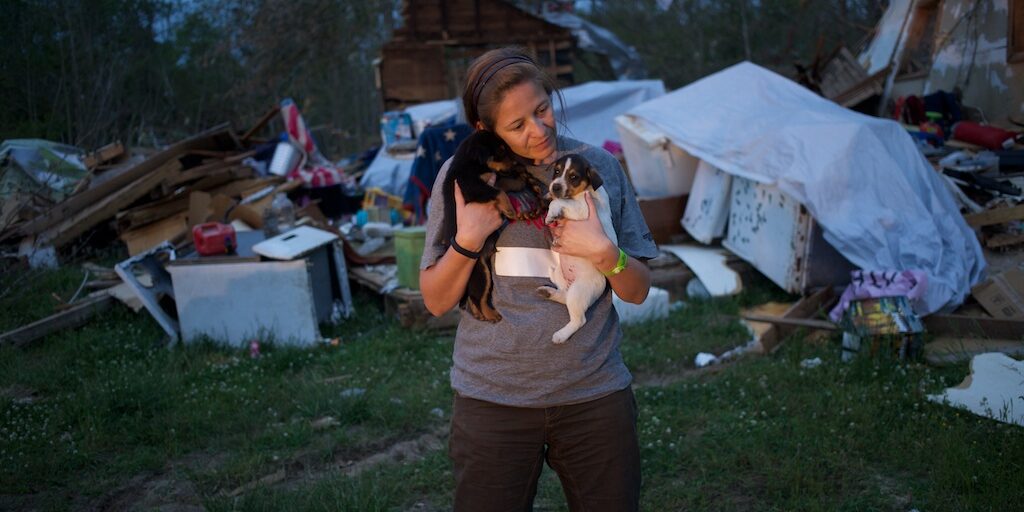Every summer, my husband and I prepare for hurricane season and create our hurricane emergency kit. Most of our supplies are the basics: batteries, bottled water, shelf-stable food, and beer. (Hey, if we’re stuck in the steaming heat with no power for days on end, we have to have some sort of social lubricant.) Ever since getting a cat, however, our plans have changed. Now, as we make a pet emergency kit, too. It’s not hard, we make sure to have extra cans of cat food on hand, as well as some spare kibble. We’ve uploaded photos of her vaccination records to our cloud storage and can transform the cardboard carton from her cans of food to a miniature disposable litter box. So on the off chance that a hurricane comes barreling down and we have to evacuate on short notice, we can grab kitty and run.
“When a disaster hits, it’s too late to start preparing,” says Beth Gammie, Director of Field Services at Red Rover, a national nonprofit that works to help pets impacted by disasters and violence. “There’s a lot you just can’t do at the last minute.”
None of us like to think about the worst happening, even people like me who think about disaster scenarios non-stop. But my nervous fretting rarely translated into action beyond chewing my nails and pacing the floor. If it’s challenging enough for us to figure out what we might do when disaster strikes, it’s even harder to factor in what to do with our furry friends. It’s why planning ahead is key, Gammie says, especially since not all emergency response teams are equipped to deal with pets.

For Gammie, there are five essential items to have on hand when surviving a disaster with a pet in tow, and what should go in your pet emergency kit.
Crates or Carriers to Hold All Pets
Have a pup that travels well? That’s great, but you will still need a crate at an emergency shelter, or if they get stressed. As for what makes the perfect one, ideally, your pet will be able to stand up and turn around, as well as have food, water, and/or a litter box handy.
A Collar, Harness, and Leash
Every pet emergency kit should include safety restraints for your pet. And, owners should be prepared to use them at all times. Emergencies are stressful and unpredictable, and it doesn’t take much to spook an animal, which can bolt at the least provocation.
Having your cell phone number on the collar can also help if you get separated during a disaster, though having them on leash will keep them safely by your side.
An Up-to-Date Microchip
All animal shelters automatically scan new intakes for a microchip, so even if you get separated during a disaster, you’ll be able to reclaim your pet. Make sure your contact information on the chip is up to date—the American Animal Hospital Association’s microchip search will let you look up your information in advance—both with your vet and with the microchip company, Gammie says.
Vaccination Records and Medical Information
Pack a hard copy of your pet’s latest vaccinations and medical information in your pet emergency kit or, take a photo with your phone at your next appointment and upload them to Dropbox, save them in the cloud, or just email them to yourself. Having those records could make a stay in a shelter for you or your pet easier to manage.
Doggy Dollars and Kitty Coins
Okay, maybe it’s just regular U.S. dollars, but stashing a little extra cash in your own emergency kit, or in a secret spot in your pet emergency kit, will allow you to purchase an extra bag of treats to help make a long drive—or stay in a shelter—bearable. Cash will also help you to acquire other sundries during a disaster, including water for your pet, especially if the power goes out.

Given that nearly every U.S. home is at risk of some of a natural disaster, and roughly one-third are at high risk, it’s more important than ever that every American be prepared for a disaster not only for themselves and their families, but for Fluffy and Fido, too.



